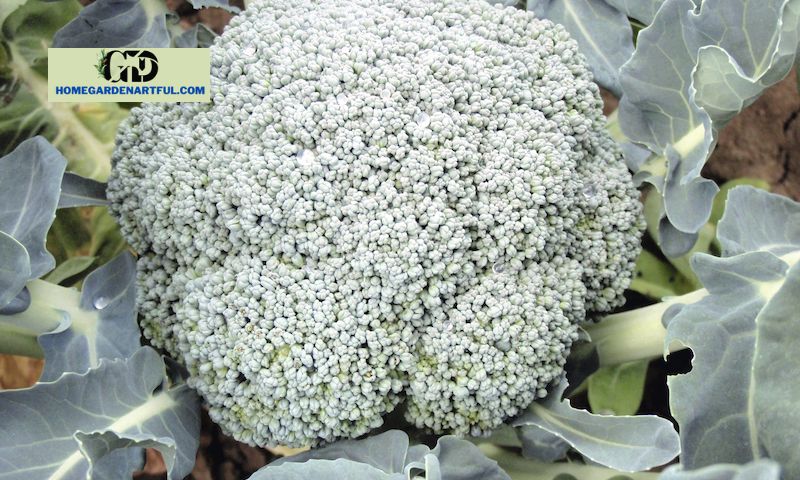Have you ever heard about Broccoli Spider Mites? Although broccoli is a well-liked and healthy food, it occasionally falls prey to pests like spider mites, which severely limit its ability to thrive. Spider mites are minuscule insects or pests that, if left unchecked, can seriously harm your broccoli plant.
Therefore, read this article from homegardenartful.com in its entirety to learn the true cause of the spider mite infestation on your broccoli as well as effective treatment advice.
5 Factors Contributing to Broccoli Spider Mites
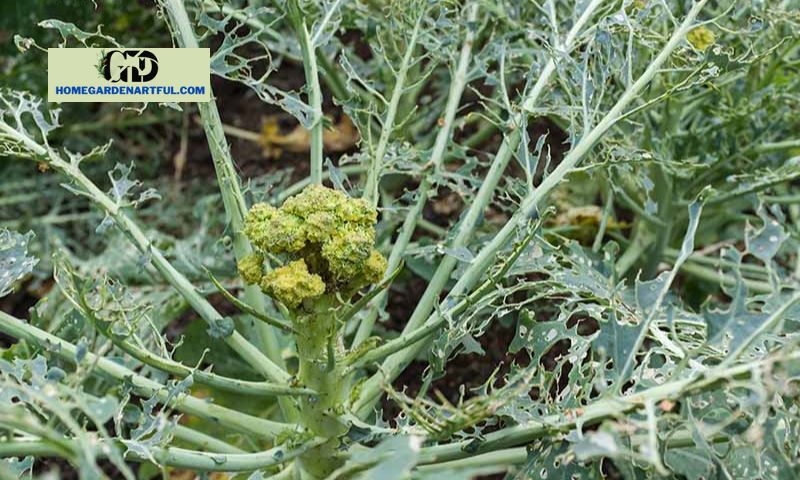
Spider mites consume the liquid found in the tissues of broccoli leaves while feeding on the leaves.
Your broccoli plant may experience leaf blotches, yellowing, curling, stunted development, etc. if the invasion becomes too severe.
1. Warm and dry weather
When does Broccoli Spider Mites happen? Broccoli may be vulnerable to spider mites if your garden suddenly encounters hot and dry weather.
Because they thrive in hot, dry circumstances, spider mites actively attack gardens.
In addition, the population of spider mites may quickly rise under warm, low-humidity conditions.
Your broccoli garden could be destroyed quickly by the growing population.
Always ensure that your broccoli is planted in 6–8 hours of daily sunlight at a temperature of 40–70°F.
Preventive and therapeutic measures
- The right temperature is maintained by mulching the area around the plant’s base.
- Plant broccoli only in the late summer to avoid heated and dry weather.
- Mist your broccoli plants frequently each day when it’s hot and dry.
- Having some shade will be helpful if it’s too hot outside.
2. Monoculture farming
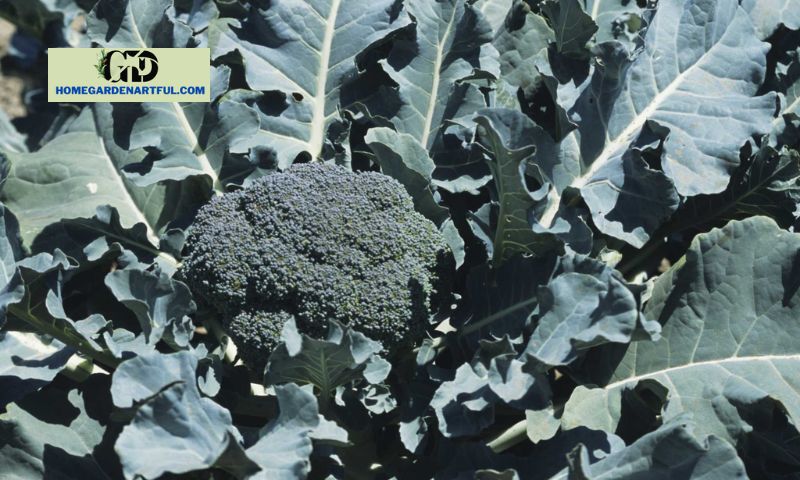
This indicates that if you are growing this crop over a sizable land region, Spider mites may find it simple to establish a favorable environment.
Furthermore, a land area needs a variety of crops in order for natural predators to appear.
Furthermore, because of the high nutrient demand, monoculture cultivation might damage the plant.
Additionally, spider mites will have an easy time spreading and destroying all of your broccoli crops.
Preventative and therapeutic measures
- Turn the crops to break the spider mite life cycle.
- If you have a large plot of land, grow a variety of crops rather than just broccoli.
- Plant the crops that spider mites like to eat close to broccoli crops.
- To increase natural enemies, employ biological control techniques.
3. Excessive Pesticide Use
Your broccoli may occasionally become infested with spider mites if you use large amounts of insecticides to get rid of harmful pests.
Because spider mites can adapt to most insecticides, this is the case. Yet, the pesticides you use can also eliminate helpful insects.
The spider mite population on your broccoli crops may suddenly surge if these helpful predators aren’t present.
Therefore, excessive pesticide use is another likely cause of the flourishing Spider mite population.
Preventative and therapeutic measures
- Use pesticides sparingly and only after carefully reading the label.
- Use a variety of pesticides to stop spider mites from developing resistance.
- As soon as you spot any insect eggs, get rid of them.
- Stop using pesticides while it’s hot and dry outside.
- To create a hostile atmosphere, only use insecticides at night.
4. Plant Stress
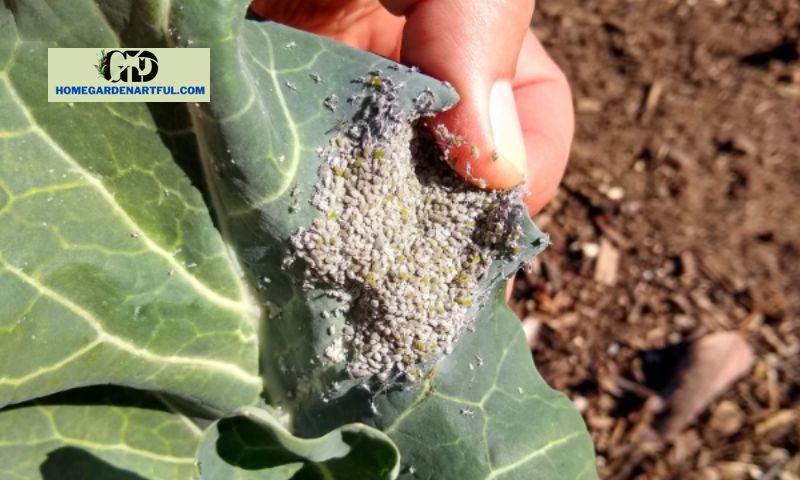
Due to a variety of factors, including inadequate hydration, soil, illnesses, physical injury, etc., your broccoli plant may become stressed, as Broccoli Spider Mites.
The growth of these stressed plants may be stunted, and they may yield less nectar. Pests such as spider mites are forced to infect more crops as a result.
Similarly to this, too much or too little water may weaken broccoli and cause it to create more volatile chemicals.
These volatile substances draw spider mites, which spread a number of illnesses. Diseases including leaf spots, root rot, yellowing, and many more are brought on by this.
Treatment Options And Prevention Options
- Regularly water your broccoli, making sure the soil is moist but not soggy.
- Put up a barrier to shield them from wind or animal harm.
- Use neem oil, neem insecticides, or organic fertilizers to protect your broccoli from disease stress.
- To correctly water your broccoli, use a moisture meter.
5. Spacing Problems
Spider mites can more easily transfer from broccoli plant to broccoli plant if you space your plants too closely.
In addition, it is difficult to observe insects between dense vegetable plants, which makes it simple for spider mites to proliferate.
Additionally, closer spacing causes poor air circulation, which stresses broccoli plants and makes them vulnerable to spider mites.
Furthermore, broccoli that are too close to one another may compete with one another for resources and weaken.
Preventative and therapeutic measures
- When planting your broccoli plants, give them a distance of 18 to 24 inches.
- Regularly check the plants under the leaves to eradicate Spider Mites at an early stage.
- If the broccoli grows a thick canopy, trim it to thin the leaves and increase airflow.
- Eliminate the damaged leaves since the rotting odor quickly attracts pests.
Other Common Broccoli Pests
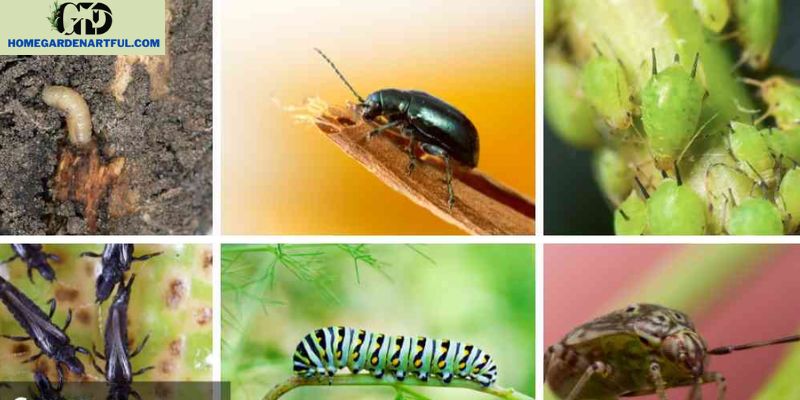
Cabbage Looper
These caterpillars are major pests of broccoli and other cruciferous veggies. They munch on leaves, leaving behind ragged, skeletonized foliage. Sometimes they even bore into stems and heads, causing significant damage.
Imported Cabbageworm
This caterpillar looks similar to the cabbage looper but is slightly larger and has a yellow stripe along its back. Imported cabbageworms feed on leaves, stems, and heads, inflicting damage much like cabbage loopers do.
Diamondback Moth
A significant pest to broccoli worldwide, diamondback moth larvae feast on leaves, creating small, irregular holes. They can also bore into stems and heads, wreaking havoc on your plants.
Harlequin Cabbageworm
While this caterpillar is a minor pest in most parts of the world, it can become a major problem in certain areas. Harlequin cabbageworm larvae graze on leaves, stems, and heads, leaving similar damage to other caterpillars.
Slugs and Snails
These slimy mollusks can cause huge issues for broccoli growers, particularly in damp regions. Slugs and snails devour leaves and stems, leaving ragged holes and wilting plants. They can also transmit diseases to your plants.

Aphids
These tiny, soft-bodied insects are common pests for many plants, including broccoli. Aphids suck sap from leaves and stems, causing the foliage to curl and yellow. Additionally, they can transmit diseases to plants.
Thrips
Another common threat to broccoli plants, these slender insects feed on plant tissue, leaving leaves stippled or silvery. Thrips can also transmit diseases to plants.
Whiteflies
In some parts of the world, these small, winged insects are a major nuisance to broccoli growers. Whiteflies consume sap from leaves, resulting in yellow and wilted foliage. They can also transmit diseases to plants.
Conclusion
It’s terrible to learn that your plant has an aphid infestation. Once you’ve acquired this knowledge on how to get rid of Broccoli Spider Mites on broccoli, you’ll be an expert in pest control and handling subsequent issues.
Your vegetables will thank you with a plentiful, healthy product as a result of your efforts, and you’ll develop confidence in handling upcoming difficulties and plant diseases.

